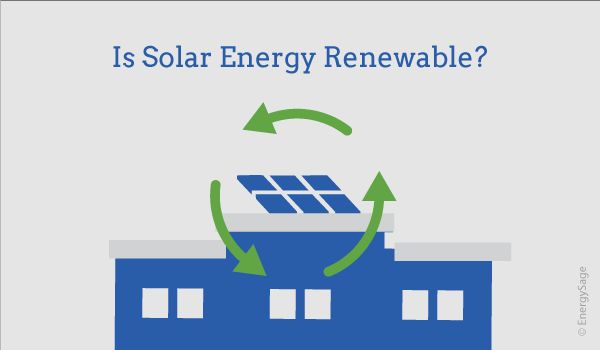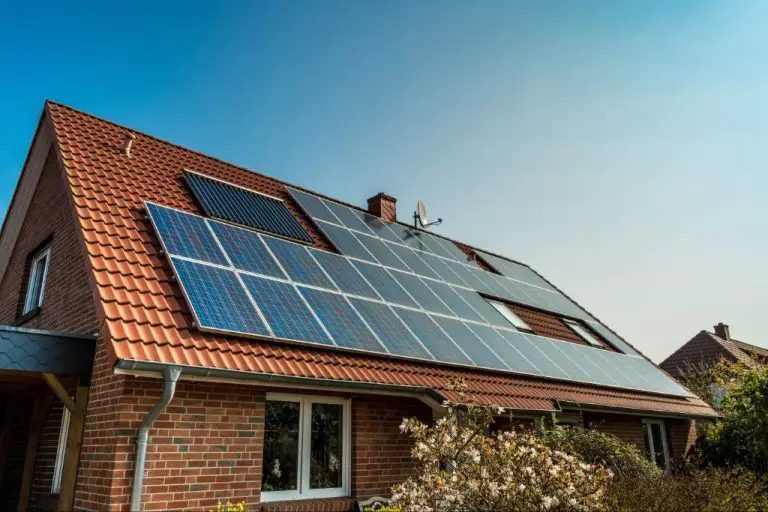What Is A Good Conclusion For Solar Energy?
Summary of Main Points
Solar energy provides a number of important benefits for the environment and society as a whole. Firstly, solar power is a clean, renewable energy source that does not generate any air pollution or greenhouse gases (EIA). Unlike fossil fuels, solar energy production does not release carbon dioxide or other pollutants that contribute to climate change and environmental degradation. By shifting to solar power, we can significantly reduce greenhouse gas emissions from electricity generation.
In addition, solar energy reduces our reliance on finite fossil fuel resources like coal, oil, and natural gas. By tapping into the unlimited power of the sun, solar energy provides a sustainable alternative to power our homes, businesses, and infrastructure (Energysage). This increases energy independence and security for nations seeking to move away from imported fuels.
Solar power also creates renewable energy jobs in installation, manufacturing, sales, and other sectors. These green jobs provide new employment opportunities as we transition to a cleaner economy (DOE). Overall, solar energy delivers important environmental, economic, and social benefits by reducing pollution, fostering sustainability, and stimulating job growth.
Cost Savings
Solar energy costs for consumers have dropped significantly in recent years, making it much more cost competitive with fossil fuels. According to the National Renewable Energy Laboratory (Consumer Affairs), solar energy now costs an average of 3 to 6 cents per kilowatt-hour and continues to trend down. In comparison, electricity from fossil fuels typically costs around 10 cents per kilowatt-hour for coal and natural gas.
The lifetime costs of solar, when accounting for subsidies, can be even cheaper at around $26 to $31 per megawatt-hour according to an analysis by Lazard (PopSci). This is significantly less than the approximate $44 to $68 per megawatt-hour for coal and $41 to $74 per megawatt-hour for natural gas.
Over a typical lifespan of 25-30 years for a solar system, these lower costs result in major long-term savings on energy bills for homeowners and businesses using solar power (Energy5). As solar technology continues to advance and installation costs come down, these savings will likely grow even more substantial in the future.
Job Creation
The solar energy industry has been a major engine for job growth in recent years. According to the Solar Jobs Census from the Interstate Renewable Energy Council (IREC), over 230,000 Americans worked in solar jobs in 2021, representing a 7.8% increase over 2020 and more than triple the number of solar jobs in 2012 (Source). Solar jobs grew in 44 states in 2021, showing the widespread economic benefits of the industry. The Department of Energy also found the entire clean energy sector added 300,000 jobs in 2022, with increasing percentages in solar, wind, energy efficiency, grid modernization and other clean energy areas (Source).
The solar industry provides well-paying skilled jobs in installation, project development, sales, engineering and more. These solar jobs provide an economic boost across the country, especially in rural areas hungry for job growth. Experts predict the industry will continue rapid job growth as solar power expands and policies support decarbonization. Solar jobs are accessible jobs that cannot be outsourced, uplifting local economies. With proper support, the solar industry can be an engine for equitable job creation nationwide.
Future Outlook
The solar industry is projected to see continued strong growth in the coming years. According to the Solar Energy Industries Association (SEIA), solar PV capacity is forecast to more than double over the next 5 years, from 134 GW at the end of 2022 to 346 GW by the end of 2027.(1) Deloitte also predicts exponential growth for solar through 2040, with installations potentially increasing 10-fold.(2) Key factors driving growth include declining costs, supportive policies, growing corporate and consumer demand, and technological advances. The SEIA forecasts the residential solar market to grow 17% annually to 2027, while the non-residential market grows 14% annually.(1) In 2023, the industry is still poised for double-digit growth around 10%, albeit slower than previous years.(3) Thus the outlook remains very positive for substantial solar expansion nationally, even if short-term headwinds temporarily slow the pace.
Challenges
While solar power offers many benefits, it also faces some key challenges related to energy storage. As noted in an article on MK Battery’s website, solar power relies on access to sunlight, which can be intermittent due to weather, seasons, and time of day (https://www.mkbattery.com/blog/challenges-solar-energy-storage). This necessitates effective energy storage solutions to stockpile solar energy when available and discharge it when needed. However, as explained in a Forbes article, energy storage technologies like batteries can be limited by raw material constraints, short lifespans, safety issues, and high costs (https://www.forbes.com/sites/erikkobayashisolomon/2022/08/18/we-have-an-energy-storage-problem/). These difficulties need to be acknowledged and addressed to realize the full potential of solar power.
Potential Solutions
As solar energy adoption increases, solutions are being developed to address some of the challenges it faces. Two key areas of focus are battery storage technology and upgrading the electric grid.
Battery storage allows solar energy gathered during daylight hours to be stored and used at night or during cloudy weather. Tesla’s Powerwall home battery is one example of this technology. Large-scale battery installations connected to solar farms can also help smooth out renewable energy availability for utility companies.
Upgrading the electric grid with advanced technologies like smart meters and microgrids can allow utilities to better manage the variable output from solar panels. Smart meters provide real-time data to help balance electricity supply and demand. Microgrids are smaller localized grids that can disconnect from the main grid and operate autonomously using solar and battery storage during power outages or when solar output is high.[1]
Wider deployment of solutions like these will maximize the benefits of solar by addressing the intermittency challenges it can pose to the electric grid.
Government Policy
Government incentives and policy support have played a crucial role in the growth of solar energy adoption in the United States. The federal solar Investment Tax Credit (ITC), which allows homeowners to deduct 26% of solar installation costs from their federal taxes through 2032, has incentivized millions of homeowners to go solar.
State and local policies like net metering, renewable portfolio standards, and rebates have also accelerated solar energy deployment. For example, California’s ambitious 100% clean electricity by 2045 mandate will continue driving large volumes of solar capacity additions.
According to the Solar Energy Industries Association, the ITC has spurred over $140 billion in solar investment in the U.S. since its implementation in 2006. The SEIA forecasts that the solar ITC will continue catalyzing around $87 billion in private investment through 2032, adding over 20 gigawatts of solar capacity.
Continued policy support remains critical for solar energy to reach its full potential. As the ITC steps down and eventually expires, policymakers may need to enact additional programs to sustain strong solar growth. Areas of focus could include incentives for energy storage, community solar, and low-income solar access, as well as updated grid infrastructure and transmission planning.
Individual Action
There are many ways individuals can adopt solar energy in their own homes and lives. According to the U.S. Department of Energy’s Planning a Home Solar Electric System, purchasing a solar panel system is the best option to maximize financial benefits.
Homeowners should consult with qualified solar professionals certified to install solar panels and work only with high-quality equipment. The U.S. Department of Energy’s Homeowner’s Guide to Going Solar recommends researching options like leasing panels or signing a power purchase agreement to avoid high upfront costs.
There are often rebates, tax credits, and other incentives available to offset the cost of residential solar installations. Homeowners can also save money on electricity bills once their solar system is operational.
Beyond installing solar panels, individuals can support solar adoption by voting for pro-solar policies and politicians. People can also talk to their family, friends and neighbors about going solar to raise awareness of the benefits.
The Bigger Picture
Solar energy can play an important role in fighting climate change and reducing greenhouse gas emissions. According to the Department of Energy, “As a renewable source of power, solar energy has an important role in reducing greenhouse gas emissions and mitigating climate change, which is critical to the health and security of current and future generations.”
The Solar Energy Industries Association notes that “Solar energy is not just a solution that can help mitigate our impact on the climate, it also contributes to the resilience and reliability of our electric grid while diversifying our energy supply.”
Climate researchers have found that “renewable energy is widely viewed as playing a central role in climate change mitigation and a clean energy transition.” This is because solar and other renewables produce little to no greenhouse gas emissions, unlike fossil fuel sources.
By continuing to expand solar energy, we can reduce dependence on fossil fuels, lower emissions, and make progress toward climate goals.
Conclusion
In the future, solar power will play an increasingly significant role in the global shift towards renewable energy sources. By 2050, solar energy is projected to account for over 40% of electricity generation in the United States alone, rising from just 3% today, as cited in this Solar Futures Study Fact Sheet. With rapid advancements in solar technology and steadily declining costs, solar power is poised to dominate electricity production within the next few decades. To realize the full potential of solar energy and transition to a clean energy system, continued investments into R&D, supportive government policies, and public engagement will be critical. If we can overcome the remaining challenges, the future is bright for solar power to lead the way in building a sustainable energy future.






